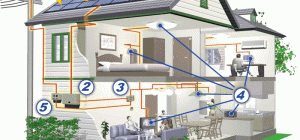E-scooter apps have ignited a revolution in the ever-evolving realm of urban mobility, reshaping how we traverse cities. 🏙️ But have you ever wondered about the gears and cogs that power these sleek rides on your smartphone screen? 📱💡 Join us on a virtual ride as we unveil the mystery behind the cost tapestry of E-scooter app development.
From coding cadences to design detours, we’ll cruise through the intricate alleyways of expenses, shedding light on the factors that steer the budget odometer. 🚀 Buckle up for a journey where innovation meets investment and where understanding the nuts and volts paves the way for the cityscape of tomorrow. 🌆🔌 Let’s dive into the byte-sized details and unplug the enigma that fuels these two-wheeled tech marvels! 🧩🔍”
What is E-scooter App Development?
E-scooter app development refers to creating mobile applications that enable users to rent, locate, unlock, and pay for electric scooters. These apps have gained popularity as a convenient and eco-friendly mode of urban transportation. Development involves designing user-friendly interfaces, integrating GPS for real-time scooter tracking, implementing secure payment gateways, and ensuring smooth communication between the app and scooter hardware. Features often include finding nearby available scooters, scanning QR codes to unlock them, trip history tracking, and customer support. E-scooter App Development solutions are crucial in promoting shared mobility and reducing traffic congestion, offering users a seamless way to access and use electric scooters for short-distance travel.
Understanding the Cost Factors in E-Scooter App Development
In the dynamic landscape of urban transportation, electric scooters, or e-scooters, have emerged as a game-changing mode of commuting. These sleek, eco-friendly vehicles have revolutionized how people navigate cities and given rise to a booming market for e-scooter app development. Behind the scenes of these user-friendly applications lies a complex web of cost factors that influence these innovative platforms’ creation, deployment, and maintenance.
1. Technological Infrastructure and Features
At the core of any e-scooter app is a robust technological infrastructure. The app must seamlessly connect riders with available scooters, track their location and usage, process payments, and provide real-time updates. The development of these features requires skilled software engineers, designers, and quality assurance testers. Additionally, integrating advanced features like geolocation services, route optimization, and user analytics can significantly impact costs.
2. User Interface and Experience (UI/UX)
A user-friendly and visually appealing interface is crucial for the success of an e-scooter app. Designing an intuitive UI/UX requires user behavior, graphic design, and interaction design expertise. The cost of creating wireframes, mockups, and prototypes and conducting user testing contributes to the overall development expenses.
3. App Platform and Compatibility
E-scooter apps must be compatible with various platforms, including iOS and Android. Developing separate versions for each venue or using cross-platform frameworks can affect costs. Additionally, ensuring compatibility with different devices, screen sizes, and operating system versions demands additional effort and resources.
4. Backend Development
The backend of an e-scooter app encompasses servers, databases, APIs, and other infrastructure components. It manages user data, scooter availability, payments, and overall app functionality. Developing a scalable, secure, and efficient backend requires expertise in cloud computing, database management, and server-side programming, which can significantly impact development costs.
5. Security and Privacy
Security is paramount in any app development project, especially when dealing with user data and financial transactions. Implementing robust encryption, secure authentication methods, and data protection measures adds to the development complexity and E-scooter App Development Cost. Compliance with data privacy regulations and standards also contributes to the overall expenses.
6. Integration of Third-Party Services
E-scooter apps often integrate third-party services for payment processing, mapping, and customer support. While these services enhance app functionality, they may come with licensing fees or usage charges contributing to the overall cost.
7. Testing and Quality Assurance
Thorough testing is essential to identify and rectify bugs, glitches, and usability issues before the app’s launch. Quality assurance involves manual and automated testing, performance testing, and compatibility testing across various devices and operating systems. Investing in comprehensive testing ensures a smoother user experience but adds to the development timeline and costs.
8. Regulatory Compliance
Complying with local regulations, permits, and licenses is critical to launching an e-scooter app. Legal consultation, regulatory research, and obtaining necessary approvals contribute to the overall expenses.
9. Maintenance and Updates
Once the e-scooter app is launched, ongoing maintenance, updates, and customer support are necessary to address technical issues, introduce new features, and maintain user satisfaction. These post-launch activities incur continuous costs over the app’s lifecycle.
10. Marketing and User Acquisition
Developing an exceptional e-scooter app is only part of the equation. Marketing and user acquisition efforts are crucial to attract a user base and drive adoption. Digital marketing, advertising, and promotions costs contribute to the overall budget.
11. Scalability
As the app’s popularity grows, the infrastructure must accommodate increasing user demand. Building a scalable architecture from the outset can involve higher initial costs but prevents expensive overhauls as user numbers surge.
How Much Does It Cost To Build an E-scooter App?
The cost to build an E-scooter mobile app can vary widely based on several factors, including the app’s features, complexity, platform (iOS, Android, or both), development team location and rates, design requirements, and additional services like backend development and ongoing maintenance. We can provide you with a rough estimate of the cost breakdown:
Basic Features:
A simple E-scooter app with essential features like user registration, GPS tracking, payment integration, and basic ride functionality can cost around $5,000 to $10,000.
Advanced Features:
If you want to include more advanced features like geofencing, real-time analytics, route optimization, in-app chat support, multiple payment options, and more, the cost could range from $8,000 to $13,000.
Design and User Experience:
Design is a crucial aspect of app development. Creating an appealing and user-friendly interface can impact costs. Depending on the complexity and customization required, design costs can range from a few thousand dollars to tens of thousands.
Platform Development:
Developing the app for both iOS and Android platforms will increase the cost. Android development might be slightly more cost-effective due to a broader range of devices, while iOS development can be more streamlined due to a smaller set of devices and versions.
Backend Development:
Building a robust backend infrastructure for user management, ride tracking, payment processing, and data storage is essential. Backend development costs could add another $10,000 to $20,000 or more to the overall cost.
Testing and Quality Assurance:
Rigorous testing and quality assurance ensure a smooth and reliable app. The budget for testing can be around 10-20% of the total development cost.
Maintenance and Updates:
Ongoing maintenance, updates, and support after the initial launch are essential for the app’s success. The budget for post-launch support can be around 15-20% of the total development cost per year.
Location and Development Team:
The hourly rates of developers and designers vary based on their location and experience. Hire Flutter App Developers in North America or Western Europe typically have higher rates than developers from Eastern Europe, Asia, or other regions.
Remember that these estimates are rough and can vary significantly based on the abovementioned
factors. Working with a reputable app development agency or team is essential to get a more accurate and personalized cost estimate based on your specific project requirements.
Conclusion
In conclusion, developing an e-scooter app involves a multifaceted interplay of technological, design, regulatory, and operational factors. Each element contributes to the overall cost, and understanding these factors is essential for stakeholders looking to enter the e-scooter market. Balancing innovation, functionality, and budget considerations is critical to creating a successful and sustainable e-scooter app that caters to the modern urban commuter.







